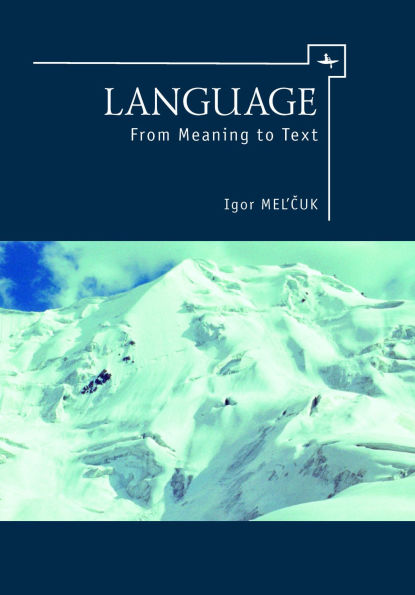This volume presents a sketch of the Meaning-Text linguistic approach, richly illustrated by examples borrowed mainly, but not exclusively, from English. Chapter 1 expounds the basic idea that underlies this approach—that a natural language must be described as a correspondence between linguistic meanings and linguistic texts—and explains the organization of the book. Chapter 2 introduces the notion of linguistic functional model, the three postulates of the Meaning-Text approach (a language is a particular meaning-text correspondence, a language must be described by a functional model and linguistic utterances must be treated at the level of the sentence and that of the word) and the perspective “from meaning to text” for linguistic descriptions. Chapter 3 contains a characterization of a particular Meaning-Text model: formal linguistic representations on the semantic, the syntactic and the morphological levels and the modules of a linguistic model that link these representations. Chapter 4 covers two central problems of the Meaning-Text approach: semantic decomposition and restricted lexical cooccurrence (≈ lexical functions); particular attention is paid to the correlation between semantic components in the definition of a lexical unit and the values of its lexical functions. Chapter 5 discusses five select issues: 1) the orientation of a linguistic description must be from meaning to text (using as data Spanish semivowels and Russian binominative constructions); 2) a system of notions and terms for linguistics (linguistic sign and the operation of linguistic union; notion of word; case, voice, and ergative construction); 3) formal description of meaning (strict semantic decomposition, standardization of semantemes, the adequacy of decomposition, the maximal block principle); 4) the Explanatory Combinatorial Dictionary (with a sample of complete lexical entries for Russian vocables); 5) dependencies in language, in particular—syntactic dependencies (the criteria for establishing a set of surface-syntactic relations for a language are formulated). Three appendices follow: a phonetic table, an inventory of surface-syntactic relations for English and an overview of all possible combinations of the three types of dependency (semantic, syntactic, and morphological). The book is supplied with a detailed index of notions and terms, which includes a linguistic glossary.
1123162688
Language: From Meaning to Text
This volume presents a sketch of the Meaning-Text linguistic approach, richly illustrated by examples borrowed mainly, but not exclusively, from English. Chapter 1 expounds the basic idea that underlies this approach—that a natural language must be described as a correspondence between linguistic meanings and linguistic texts—and explains the organization of the book. Chapter 2 introduces the notion of linguistic functional model, the three postulates of the Meaning-Text approach (a language is a particular meaning-text correspondence, a language must be described by a functional model and linguistic utterances must be treated at the level of the sentence and that of the word) and the perspective “from meaning to text” for linguistic descriptions. Chapter 3 contains a characterization of a particular Meaning-Text model: formal linguistic representations on the semantic, the syntactic and the morphological levels and the modules of a linguistic model that link these representations. Chapter 4 covers two central problems of the Meaning-Text approach: semantic decomposition and restricted lexical cooccurrence (≈ lexical functions); particular attention is paid to the correlation between semantic components in the definition of a lexical unit and the values of its lexical functions. Chapter 5 discusses five select issues: 1) the orientation of a linguistic description must be from meaning to text (using as data Spanish semivowels and Russian binominative constructions); 2) a system of notions and terms for linguistics (linguistic sign and the operation of linguistic union; notion of word; case, voice, and ergative construction); 3) formal description of meaning (strict semantic decomposition, standardization of semantemes, the adequacy of decomposition, the maximal block principle); 4) the Explanatory Combinatorial Dictionary (with a sample of complete lexical entries for Russian vocables); 5) dependencies in language, in particular—syntactic dependencies (the criteria for establishing a set of surface-syntactic relations for a language are formulated). Three appendices follow: a phonetic table, an inventory of surface-syntactic relations for English and an overview of all possible combinations of the three types of dependency (semantic, syntactic, and morphological). The book is supplied with a detailed index of notions and terms, which includes a linguistic glossary.
35.0
In Stock
5
1

Language: From Meaning to Text
270
Language: From Meaning to Text
270
35.0
In Stock

Product Details
| ISBN-13: | 9781618117694 |
|---|---|
| Publisher: | Academic Studies Press |
| Publication date: | 07/28/2020 |
| Pages: | 270 |
| Product dimensions: | 6.14(w) x 9.21(h) x (d) |
About the Author
From the B&N Reads Blog
